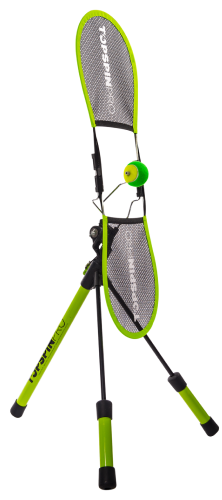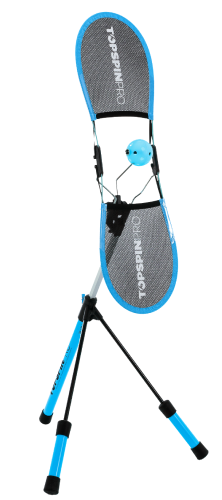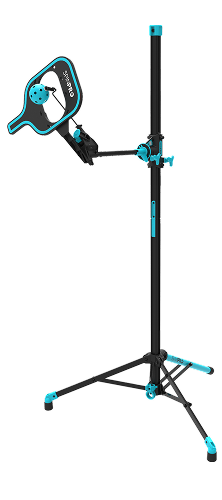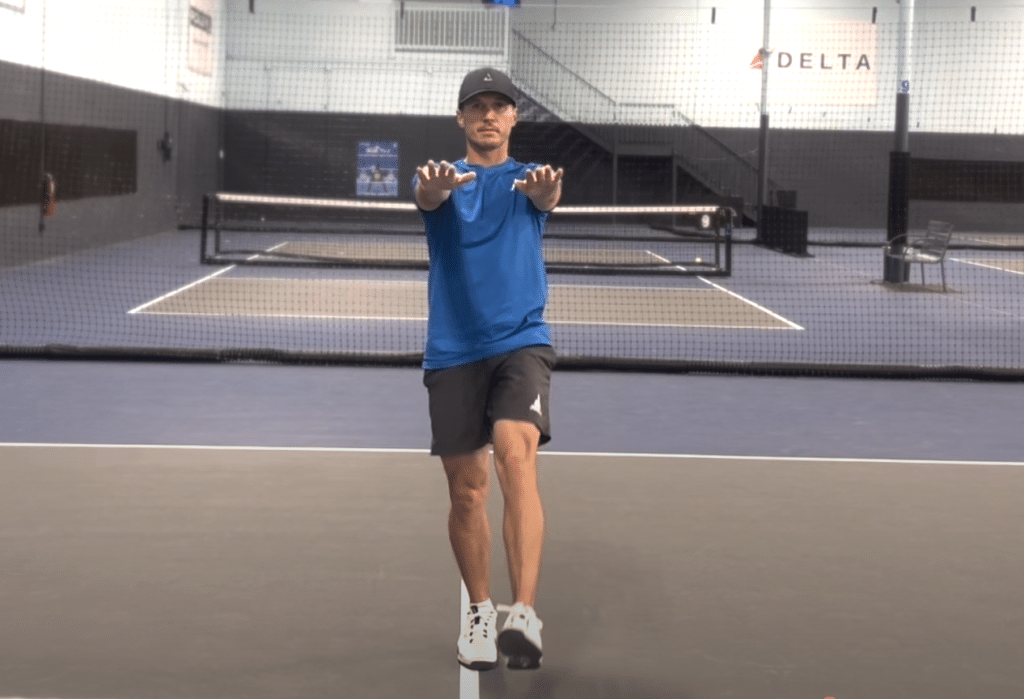
What we'll cover in this article:
Stay in the loop!
Want to be updated when we publish? Be sure to sign up for our newsletter. No spam, we promise!
Pickleball may be one of the fastest-growing sports, but with all the quick movements, lateral shifts, and repetitive swings, injuries are more common than you’d think. Whether you're a beginner or a seasoned player, knowing how to prevent injuries and recover properly can help keep you on the court longer and playing at your best.
To dive deeper into the most common pickleball injuries, prevention strategies, and recovery tips, we spoke with Dr. Brien Lee. Keep reading for insights on movement patterns, rehab techniques, and how tools like the TopspinPro can assist in recovery.
Let’s get started! 👇
Meet Dr. Brien Lee: A Pickleball Injury Expert
I’m a Doctor of Physical Therapy who specializes in helping pickleball players rehab injuries and improve their performance on the court. I got involved with pickleball back in 2021 when I started working with a couple of clients who were avid pickleball players, helping them rehab injuries related to the game.
I wanted to help my clients as much as I could, so I started studying pickleball and learning everything I could about the game. My clients were playing several hours a day, multiple days in a row. I found myself wondering, what is it about this game that draws people in to play so often? They were so passionate about it when they talked about it. One day, they invited me to play, and I instantly loved it. I remember looking around at the eight pickleball courts and seeing how packed it was, families, college students, and seniors playing with high schoolers, it was such a vibrant community.
But when I started seeing articles about the rising number of pickleball injuries, I became concerned that it might deter people from playing or create fear around injury. What bothered me was that while everyone was talking about the injuries, there was very little being said about how to be proactive and reduce your risk. I saw there was a demand for that information, which inspired me to start my podcast and become a resource for players. From there, I dove even deeper into working with pickleball players. I truly believe in the positive impact the game can have on physical, mental, and social health. Now, I’m also a competitive player, so I’m living and experiencing everything pickleball has to offer, firsthand.
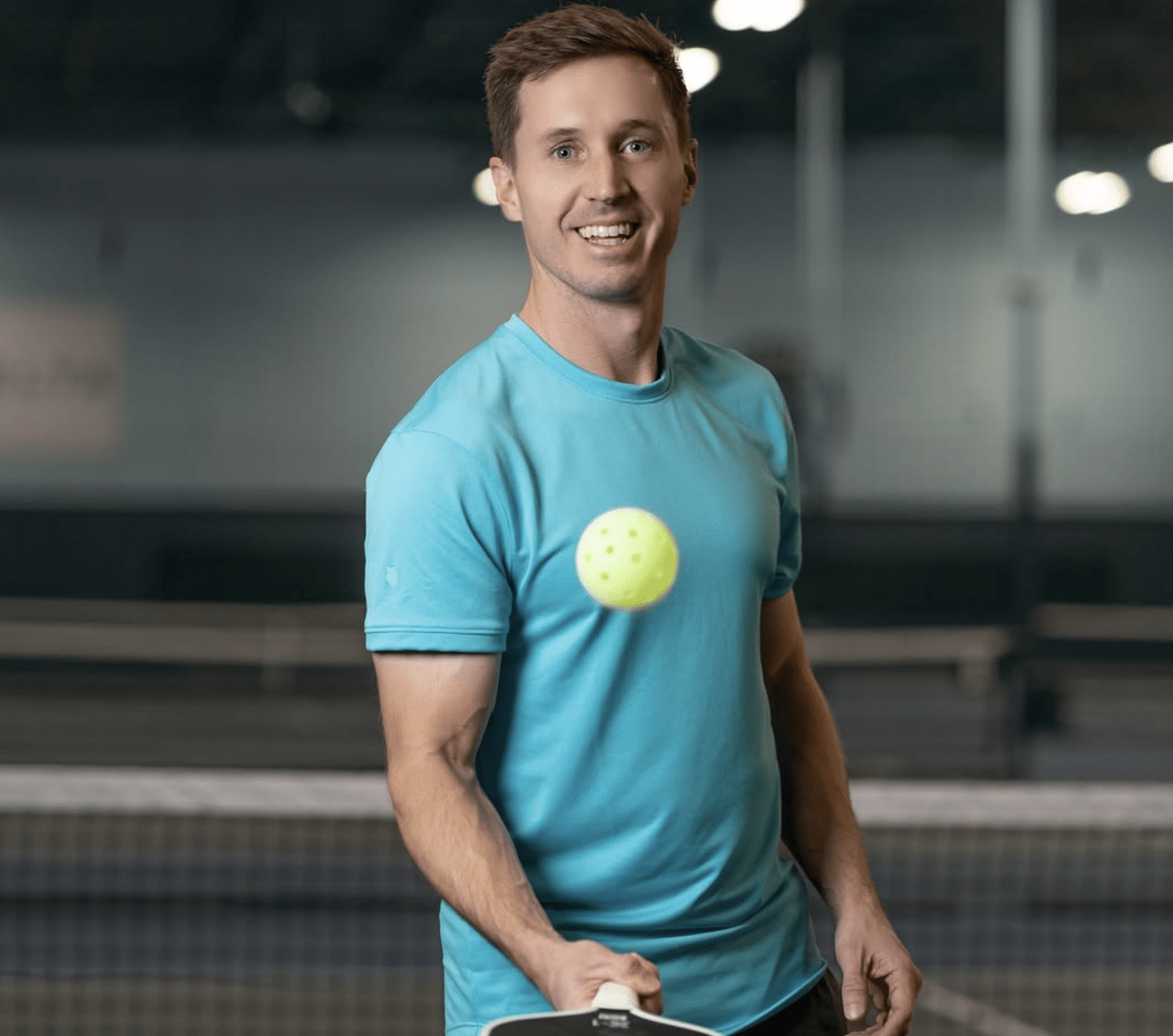
The Most Common Pickleball Injuries & How They Happen
The most common injuries I see in pickleball are often overuse injuries, resulting from the repetitive movements and the frequency with which players engage in the game. Among these, pickleball elbow and back pain are two of the most prevalent conditions I help players address.
Pickleball Elbow
This condition affects the outer part of the elbow, where the tendon attaches to the bone. It’s a degenerative condition that occurs when repetitive stress over time exceeds the tendon’s ability to repair itself. The primary cause is overuse, often due to playing frequently without adequate recovery. Weakness in the shoulder, improper technique, and unsuitable equipment can also contribute.
Here are some pickleball elbow rehab tips:
Back Pain
Pickleball requires frequent bending and rotation, as players often need to get low to reach shots due to the plastic ball’s lower bounce. When players lack adequate leg strength and mobility, and when the back hasn’t been trained to handle these specific movements, it can lead to soreness and discomfort in the back. Proper conditioning is key to reducing the risk of low back pain and ensuring the back is prepared to handle the unique demands of the game.
Here are some back rehab tips:
Best Exercises & Stretches to Prevent Pickleball Injuries
There are many variables to consider when reducing the risk of injuries in pickleball, but some of the most important ones I help players incorporate are strength training, load management, and routine mobility work.
Strength Training
Strength training builds capacity and resilience by focusing on fundamental movement patterns like squatting, hinging, lunging, pushing, pulling, and rotating, along with sport-specific exercises.
Load Management
Load management involves monitoring play volume, including duration, frequency, and intensity. Drilling and playing are not the same; drilling a specific shot results in significantly more reps and can place greater stress on certain tissues. For example, repeatedly drilling a backhand flick puts more strain on the wrist and forearm compared to a typical doubles game, where shot selection is more varied. Balancing play with active recovery days is key to long-term durability.
Mobility Work
Mobility work is also essential, as pickleball’s repetitive, one-sided nature can contribute to a loss of range of motion if not addressed. Of course, a proper dynamic warm-up and wearing supportive court shoes are also key to reducing injury risk, but I wanted to highlight other important considerations that aren’t talked about enough.
Here's some example mobility work:
How To Balance Frequent Play With Proper Recovery
When players don’t allow enough recovery time, their bodies can’t adapt to the frequency of play, which is when injuries tend to occur. To prevent this, it's important to integrate recovery strategies throughout the week. Here are some ways to balance play and recovery:
Vary Your Play
Instead of playing four hours every day, try mixing it up with lighter sessions and short drills to give your body a break. Varying your play style also helps prevent overuse and reduces strain on the same muscles.
Active Recovery Days
On your rest days, incorporate mobility work and focus on training muscle groups that aren't used as much in pickleball. This keeps your body balanced and reduces the risk of imbalances from overworking certain areas.
Sleep and Nutrition
Proper nutrition is key for muscle repair, and sleep is when the body recovers most effectively. Make sure you are fueling your body with the right nutrients and getting enough rest to allow these processes to happen.
By integrating these recovery strategies into their routines, players can continue to enjoy pickleball frequently while reducing injury risks and improving long-term performance.
What To Do If You Experience Pain Or Injury
The number one priority is to seek out a qualified healthcare professional, such as a physical therapist, who can assess the injury and guide your recovery. Attempting to manage injuries on your own may increase recovery time and lead to frustration, especially without knowing the proper steps to take.
While pain may be present at a certain location, a healthcare professional will assess the entire body to identify contributing actors that may not be obvious. Complete rest is rarely the solution, though it may help reduce pain, it doesn’t prepare the body to handle the demands of pickleball once you return to play. A physical therapist can provide proper guidance to address your specific needs, ensuring that you not only recover from injury but are set up for long-term success when you return to the court.
How Training Aids Like the TopspinPro Help with Rehab
The TopspinPro is a valuable tool in rehab for pickleball players, helping to reinforce proper mechanics and reduce unnecessary stress on the arm. I often incorporate it into the plan of care for my pickleball clients, especially those rehabbing upper extremity conditions.
It’s important to address technique errors to reduce the likelihood of symptoms returning once players get back on the court. This typically becomes a focus during the return-to-play phase of rehab. Some of the most common technique errors include excessive wrist use when generating spin, making contact too late or behind the body, and improper grip pressure.
The TopspinPro is a great tool for addressing these issues. It provides immediate feedback on the swing path and helps guide players to improve their coordination, emphasizing proper use of the shoulder and upper body mechanics instead of relying too heavily on the wrist.


How Can Players Enhance Their Performance On The Pickleball Court?
Off-court training is essential for improving performance in pickleball, particularly in stamina, strength, and power. Stamina enables players to maintain their energy and mental clarity during long matches or tournaments. When stamina declines, players become fatigued, which often leads to poor positioning and a drop in overall performance.
Strength and power are also important, especially as the speed of the game continues to increase. Having a big serve, powerful drives, and the ability to finish put-away shots are crucial for performing at a high level and staying competitive throughout the game. Power, however, is an often undertrained component of fitness, particularly in older adults. With the right expert guidance, older adults can perform power training safely, which will help enhance their performance on the court.
More About Dr. Brien Lee
To find out more about Dr Brien Lee or to work with him you can head to his:
Website - Visit Dr. Lee’s official website to explore his services, read his latest articles, and stay updated on upcoming events and projects.c
Podcast - Tune into his podcast, where he shares valuable insights,
Instagram - Follow Dr. Lee on Instagram for regular rehab tips
FAQs
-
What are the most common pickleball injuries and their causes?
The most common pickleball injuries are overuse injuries, such as pickleball elbow and back pain. Pickleball elbow is caused by repetitive stress on the tendon in the elbow, while back pain often results from frequent bending and rotation without proper leg strength and mobility.
-
How can players prevent injuries while playing pickleball?
Players can prevent injuries by incorporating strength training, load management, and mobility work into their routines. Strength training builds resilience, load management involves balancing play with recovery, and mobility work maintains range of motion, reducing injury risk.
-
What recovery strategies can help balance frequent play?
To balance frequent play, players should vary their play style with lighter sessions and short drills, incorporate active recovery days focusing on different muscle groups, and ensure proper nutrition and sleep for muscle repair and effective recovery.
-
What should players do if they experience pain or injury?
If players experience pain or injury, they should seek a qualified healthcare professional, like a physical therapist, for assessment and guidance. Complete rest is rarely the solution; professional advice ensures proper recovery and prepares the body for a return to play.
-
How can training aids like the TopspinPro assist in rehab?
The TopspinPro helps reinforce proper mechanics and reduce stress on the arm, providing feedback on swing path and coordination. It addresses technique errors, emphasizing shoulder and upper body mechanics, which is crucial during the return-to-play phase of rehab.
Enjoyed this article?
Be sure to sign up for our newsletter and we'll keep you up to date about new posts
